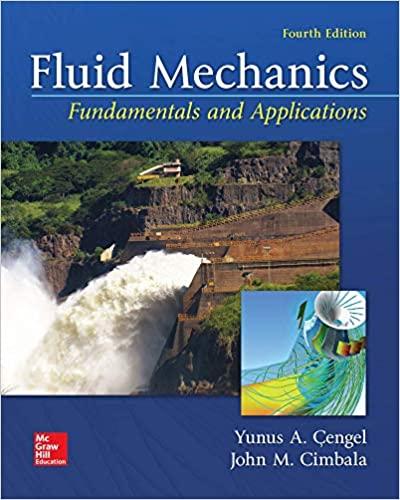When modeling fluid flows with small changes in temperature and pressure, the Boussinesq approximation is often used
Question:
When modeling fluid flows with small changes in temperature and pressure, the Boussinesq approximation is often used in which the fluid density is assumed to vary linearly with changes in temperature. The Boussinesq approximation is \(ho=ho_{0}\left[1-\beta\left(T-T_{0}\right)\right]\), where \(\beta\) is assumed to be constant over the given temperature range; \(\beta\) is evaluated at reference temperature \(T_{0}\), taken as some average or mid-value temperature in the flow; and \(ho_{0}\) is a reference density, also evaluated at \(T_{0}\). The Boussinesq approximation is used to model a flow of air at nearly constant pressure, \(P=95.0 \mathrm{kPa}\), but the temperature varies between \(20^{\circ} \mathrm{C}\) and \(60^{\circ} \mathrm{C}\). Using the mid-way point \(\left(40^{\circ} \mathrm{C}\right)\) as the reference temperature, calculate the density at the two temperature extremes using the Boussinesq approximation, and compare with the actual density at these two temperatures obtained from the ideal gas law. In particular, for both temperatures calculate the percentage error caused by the Boussinesq approximation.
Step by Step Answer:

Fluid Mechanics Fundamentals And Applications
ISBN: 9781259696534
4th Edition
Authors: Yunus Cengel, John Cimbala





